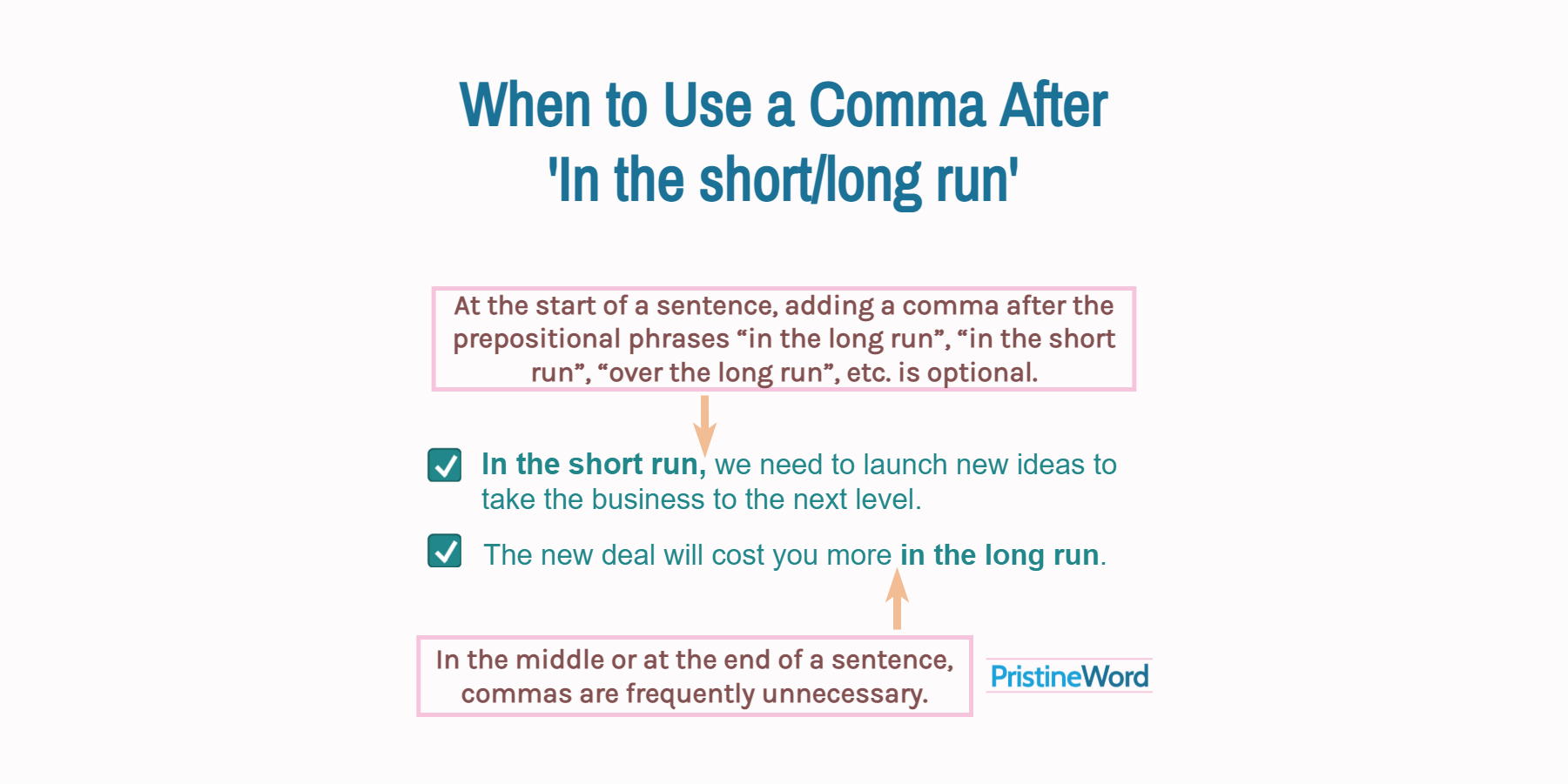At the beginning of a sentence, adding a comma after the prepositional phrases “in the long run”, “in the short run”, “over the long run”, or “over the short run” is often optional.
At the beginning of a sentence, we typically add a comma after the prepositional phrases “in the long run”, “in the short run”, “over the long run”, and “over the short run”. However, if the construction is concise and clear, the comma is optional.
In the short run, we need to launch new ideas to take the business to the next level.
Commas are generally unnecessary in the middle or at the end of a sentence.
The new deal will cost you more over the long run.
But there are particular sentence structures where commas may be required in mid-sentence. For example, use commas to include phrases like these as an aside.
That idea of innovation is, in the long run, vital to companies operating in the technology sector.
1. Commas at the Beginning of a Sentence
At the beginning of a sentence, we normally place a comma to set off introductory phrases, such as “in the long run” or “in the short run”, from the rest of the sentence.
In the long run, creative competitions should lead to skill development.
If the introductory phrase starts with a preposition and the sentence is clear and concise, the comma is optional.
In the short run team building is essential for us.
With long or complicated sentences, adding a comma after an introductory phrase is the better option.
In the long run, it is essential for a company like this to be aware of the rights and risks that go hand in hand with a differentiation strategy.
Follow the same comma guidelines when using other similar expressions, such as over the short/long run or for the short/long run.
Over the long run, her attempts to solve a problem cause an even bigger problem.
2. In the Middle or at the End of a Sentence
In the middle or at the end of a sentence, we do not usually put a comma before or after the phrases “in the long run”, “in the short run”, “over the long run”, etc.
This may be the best option in the long run.
This strategy won't make any difference in the short run.
There are particular situations, however, where commas may be need. For example, use commas to signal a pause, avoid confusion, or add a series of coordinate phrases.
This strategy can only improve our financial system and, in the long run, make the economy more efficient.
Follow the same comma strategy with the expressions "in the short term" and "in the long term".

